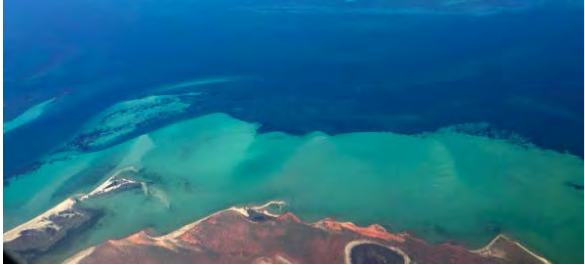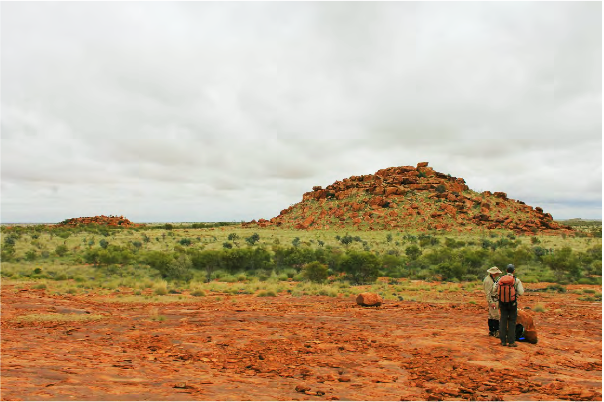-
Recap of the 2015 Western Australia Astrobiology Grand Tour
January 08, 2016 / Written by: Miki Huynh
Overhead shot of Shark Bay. Source: ACA/UNSW.NASA Astrobiology Institute Field Trip Scholarship recipients Giada Arney, Marisol Juarez Rivera and Shaunna Morrison took part in the Western Australia Astrobiology Grand Tour, an eleven-day field trip where participants discovered the unique geography, molluscs and microbial life of Shark Bay, trekked through the iron-rich landscape of the Pilbara—analogous to Martian terrain—to study the banded iron formation of Mount Tom Price and ancient gorges of Karijini National Park, investigated fossils, camped under the stars, and more. The tour was led by Malcolm Walter, professor of astrobiology at the University of New South Wales (UNSW) and founding director of the Australian Centre for Astrobiology (ACA), one of NAI’s International Partners.
The scholarship recipients provided an engaging report full of details and images, available at: http://nai.nasa.gov/media/medialibrary/2016/01/Australiareport_Final.pdf

The shells of bivalve molluscs able to survive in the salty waters of Hamelin Bay. Source: ACA/UNSW.The tour was organized by ACA and UNSW. The first Australian Grand Tour took place in 2013 as a way to take researchers, educators, and students to sites that “every astrobiologist or geobiologist should see at least once in their lives” to enrich their teaching and research. More information on the tours and other ACA events can be found at their website.

Gallery Hill in the Pilbara. Source: ACA/UNSW.Source: [NASA Astrobiology Institute (NAI)]
- The NASA Astrobiology Institute Concludes Its 20-year Tenure
- Global Geomorphologic Map of Titan
- Molecular Cousins Discovered on Titan
- Interdisciplinary Consortia for Astrobiology Research (ICAR)
- The NASA Astrobiology Science Forum Talks Now on YouTube
- The NASA Astrobiology Science Forum: The Origin, Evolution, Distribution and Future of Astrobiology
- Alternative Earths
- Drilling for Rock-Powered Life
- Imagining a Living Universe
- Workshops Without Walls: Astrovirology